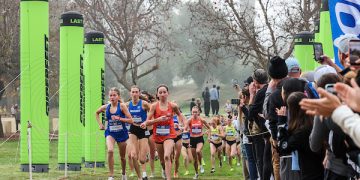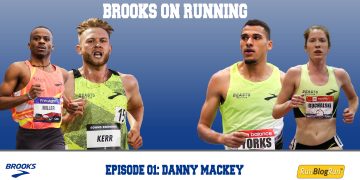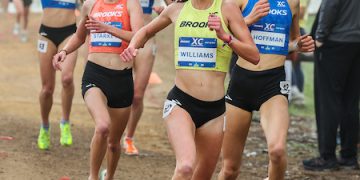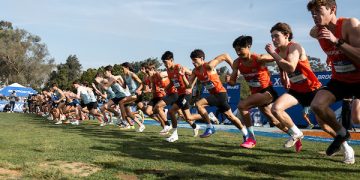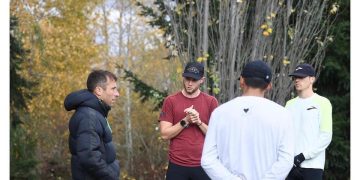The IAAF Global Running Conference was held May 31-June 1 in Lanzhou, China. At the conference, over 600 delegates learned about the state of the sport, where trends are globally and were provided some new research on the sport. Thanks to Jens Jakob Andersen, in a very thorough report provided for the IAAF, in cooperation with RunRepeat.com, we have this exceptional report on the global sport.
We post here with full credit to Jens Jakob Anderson and the monumental task he took on, and thank him for his enthusiasm and body of work.
RelatedPosts
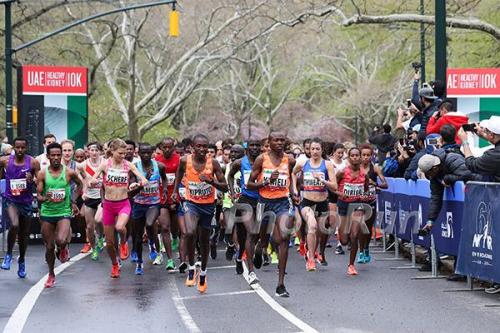 Start, Healthy Kidney Run, 2018, photo by PhotoRun.net
Start, Healthy Kidney Run, 2018, photo by PhotoRun.net
The State of Running 2019
For this study, we analyzed 107.9 million race results – by far the largest in history. They include participants from 209 countries and a total of over 70 thousand events. The time frame is between 1986 and 2018.
Our dataset covers 96% of US race results, 91% of the race results from the EU, Canada, and Australia and a smaller sample from Asian, Africa and South America.
The study was done in collaboration with the International Association of Athletics Federations (IAAF) and presented in China in June 2019.
You may use material from this report as long as you refer to this original report.
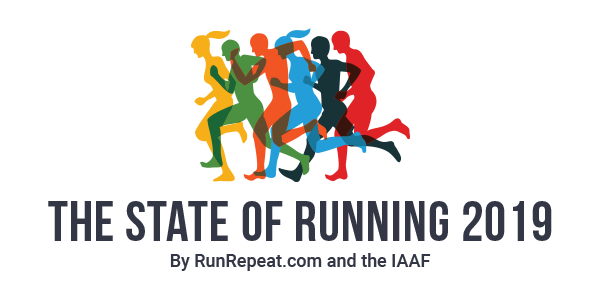
Key conclusions
- Event participation is in decline for the first time
- Male runners have never been slower
- Runners have never been older
- Motives for running 5K vs Marathon are different
- Milestone ages (30, 40, 50 years old) matters less nowadays
- For the first time in history, there are more female than male runners
- In the US, the 5K is the most popular. In Asia, Africa and SA it’s 10K. In the EU it’s the half marathon
- Running is generally more popular in temperate climate countries
- Traveling to race has never been more popular
- Racing in non-English speaking countries is on the rise
- Motives for running are potentially changing
- … and many more
The trends of mass participation running
Running is huge and has quite a big following, but as we can see from the chart below it’s declining in the last two years. This is mainly due to a decline in participation in Europe and the US. Participation in Africa and Asia is very much on the rise, just not enough to compensate.
The participation in running races has peaked in 2016 with a total of 9.1 million results and then it declined to 7.9 million (a decline of 13%) in 2018. If we look at the change in participation in the last 10 years there is an increase in participation of 57.8% (from 5 to 7.9 million participants).
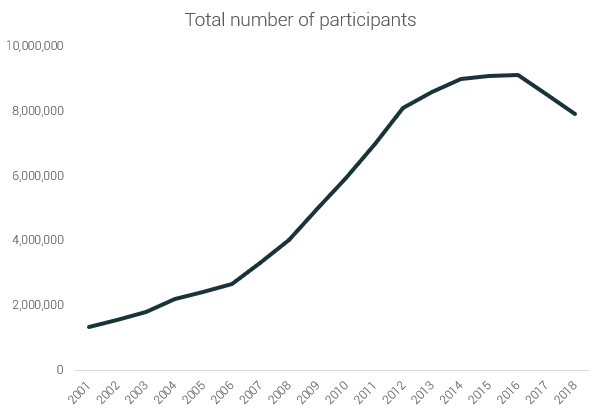
5-kilometer races and half marathons have the highest numbers of participants (2.9 and 2.1 million participants in 2018, respectively). But also have suffered the biggest decline in participation in the last 2 years. Half marathoners have declined by 25% (from 2.9 million) in the last 2 years. and 5K participants have declined by 13% (from 3.4 million).
10Ks and Marathons have a more modest following – 1.8 and 1.1 million participants respectively in 2018. But it’s quite stable over the last few years – the participation rates have fluctuated less than 2% the last 2-3 years.
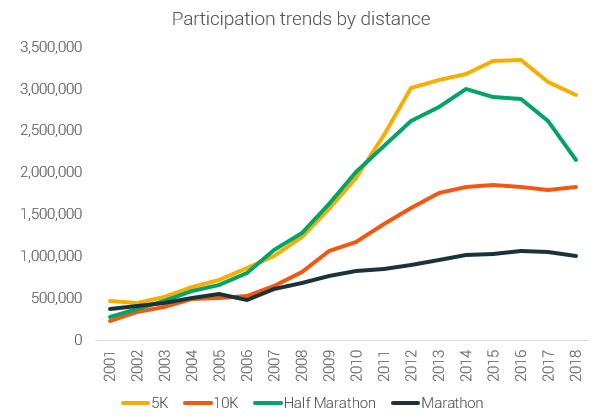
It’s also interesting to see which do people prefer – smaller or bigger races. We have chosen 5,000 participants as the boundary.
Our analysis shows that almost equal amounts of people enter small races as do big races, with a slight preference for the bigger ones. On average big races attract 14% more participants.
Also, the participation trends for both types of races follow a similar trend. The participation in big races is on the rise until 2015 and for small races, it’s on the rise until 2016. But the decline in participation in the smaller races is more pronounced – 13%, compared to the one for the bigger races – 9%.
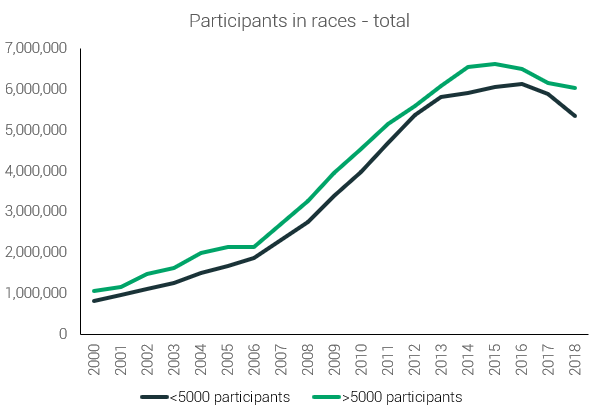
When we talk about running races we usually think about marathons, however, in the last few years, they account for just 12% of the results (shrunk from over 25% at the beginning of the century). This has led to growth in half marathon participation, an increase from 17% to 30% of total participants
The proportions of participants in 5Ks and 10Ks are quite stable, but still experiencing some growth – 5K participants have increased by 3% on average, and 10K participants by 5%.
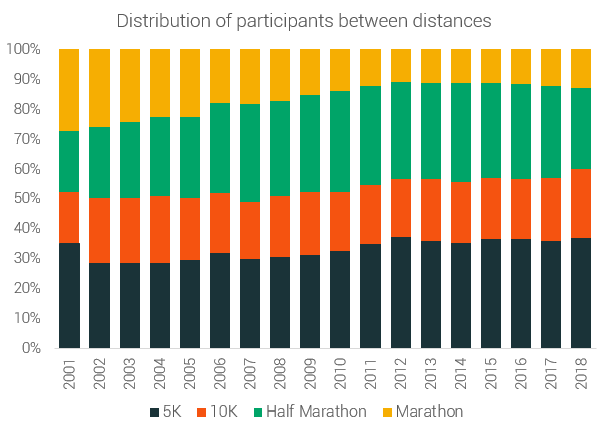
To see the entire report, in its’ original form, please go to: https://runrepeat.com/state-of-running

Jens Jakob is a fan of short distances with a 5K PR at 15:58 minutes. Based on 35 million race results, he’s among the fastest 0.2% runners. Jens Jakob previously owned a running store, when he was also a competitive runner. His work is regularly featured in The New York Times, Washington Post, BBC and the likes as well as peer-reviewed journals. Finally, he has been a guest on +30 podcasts on running.



